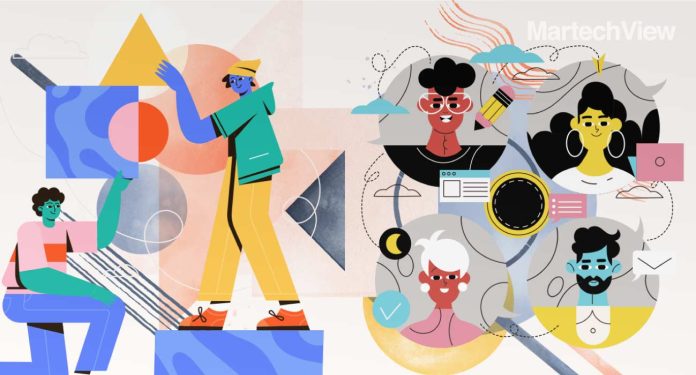“Dear Valued Customer.” AI is ushering in the era of hyper-personalization! Learn how brands leverage data and AI to deliver 1:1 experiences that win hearts and wallets.
Soon, organizations that excel in personalization will outsell others. Personalization in marketing has been around for quite some time now. It began with replacing “Hello customer” with “Hello Freya”.
Brands send marketing messages that are specially crafted for the consumer. For instance, they come as emails during weekends, when consumers check their mailbox, and app push notifications during lunch hour because, generally, people check notifications on their phones. The brand knows what clothes consumers like and sends recommendations that suit their tastes. Seeing the purchase pattern, during the first week of the month, consumers get reminders about stocking up on groceries they might run out of based on past purchases, which shows that the brand cares.
And that’s what hyper-personalization is. With hyper-personalized marketing, the content, products, and services are tailored to meet the needs and wants of every customer. This is accomplished by leveraging all forms of customer data: demographic and profile data, browsing patterns, geographic location, purchasing, and real-time behavior data across multiple channels and touchpoints.
Importance of hyper-personalization
More than 80% of consumers want brands to understand them better and know when and when not to approach them.
A couple of years ago, demographic and behavioral-data-based segmentation was the most effective tool for marketers to go beyond cookie-cutter marketing and deliver personalized experiences.
However, today’s customers are more tech-savvy and better informed than ever before. When consumers are bombarded by marketing clutter, they are almost always distracted and pressed for time — they expect brands to convey precisely the message they want or need. Whenever your content fails to resonate with your user, you miss an opportunity to engage him, provide a bad customer experience, and endanger your relationship.
What matters for today’s customers is a hyper-personalised experience. According to cmo.com, 42% of consumers would pay more for a friendly, welcoming experience, and 52% would pay more for a speedy and efficient customer experience.
Deliver hyper-personalized customer experience
If you know “what has happened” and can identify patterns in the behavior, you can predict “what will happen” and then decide “what needs to be done” to get the desired outcomes. In other words, you can deliver hyper-personalised customer experiences through AI-powered marketing.
AI and machine learning are all about understanding those patterns from data, deriving meaningful insights, and creating personas. You can deliver hyper-relevant, hyper-personalised content experiences to these personas.
You can send an email with personalization using the customer’s name in the subject line. With AI-powered insights, you can still send a hyper-personalised email based on an item the customer recently browsed on your site. The subject line and send time can also be optimized to increase response rates.
How does AI-powered hyper-personalization work?
AI runs on data. The AI engine learns from historical customer data and teaches itself to predict customer behavior by analyzing historical data.
In AI, patterns are generated based on the customer’s profile, social interactions, and behavioral data – why they responded to an offer, why/when they clicked an email or SMS, and preferences, likes, and dislikes. Based on these insights, you can then target your marketing efforts. Data is, therefore, at the center of any AI-based marketing strategy. Only when the data is connected and pulled from across channels, devices, and data sources can you extract the real value of AI-based personalization.
All technologies and platforms that collect customer data must be integrated to achieve a unified customer view. Connecting your systems tightly will make your AI system more effective.
Also Read: All You Need To Know: Google’s Privacy Sandbox
How does AI power hyper-personalization?
Using AI, you can segment your customers down to the level of one. With such a good target base, you can develop personalized content, deliver it in a targeted way, and help drive engagement. The following ways in which AI enables hyper-personalisation:
Predictive marketing
One of the most critical aspects of hyper-personalized marketing is understanding what the customer will do next. This enables you to tailor your marketing strategy for maximum effectiveness. AI can tell you whether a customer is churning, will make a purchase, or needs some nudge to move down the funnel. Using these powerful insights, you can stay ahead of the competition and deliver a relevant experience. Netflix’s long list of recommended movies and TV shows is a fantastic example of a personalized user experience powered by AI.
Customized contextual content
Hyper personalization makes it easier to customize marketing to your consumers’ requirements and tastes and target them at the optimal time in their journey. You may create highly contextual and relevant communication by combining behavioral and real-time customer data with AI insights and tools.
For example, AI may analyze client demographics, current geographic location, most frequent purchase times, and communication preferences with companies to give you a clearer picture of how to engage with them. While the material is essential, it isn’t meaningful without context. In other words, hyper-personalization enables content marketers to communicate more proactively with their target consumers by making their material more contextually relevant.
Real-time customer support
Today’s customers seek instant responses and resolutions to their problems. Customers value real-time customer service. Given the growing client base and their expectations, providing this level of service at scale is hard. But then there are AI chatbots for real-time conversation, answering basic queries, tracking and fulfilling orders, and resolving minor difficulties.
Seeing the scenario, we can say that, sooner or later, the average person will have more conversations with chatbots than with their partners. While this can be heartening and concerning simultaneously, the fact remains that chatbots are the thing now.
Accurate attribution
“Most marketers rely on reporting rather than genuine attribution,” says Adobe’s Director of Integrated Marketing Analytics, Matt Scharf.
Attribution is essential when evaluating the success of your activities — understanding the customer’s whole buying journey, which marketing channels create revenue, and what types of content promote conversion, engagement, and retention. It’s tough to connect with so much client data from many sources.
Modern AI attribution models can help with this. You can evaluate how effectively each touch point drives business KPIs and optimize your marketing plan beyond typical attribution approaches. Knowing what works for each user, you can handle each user appropriately.
AI has enormous potential to increase your brand’s engagement and conversions. To summarise, the entire game relies on gaining a firm grasp on your data, embracing AI-based data analysis’s powers, putting them into practice, and constantly adjusting yourself. The key to long-term success is staying relevant.










